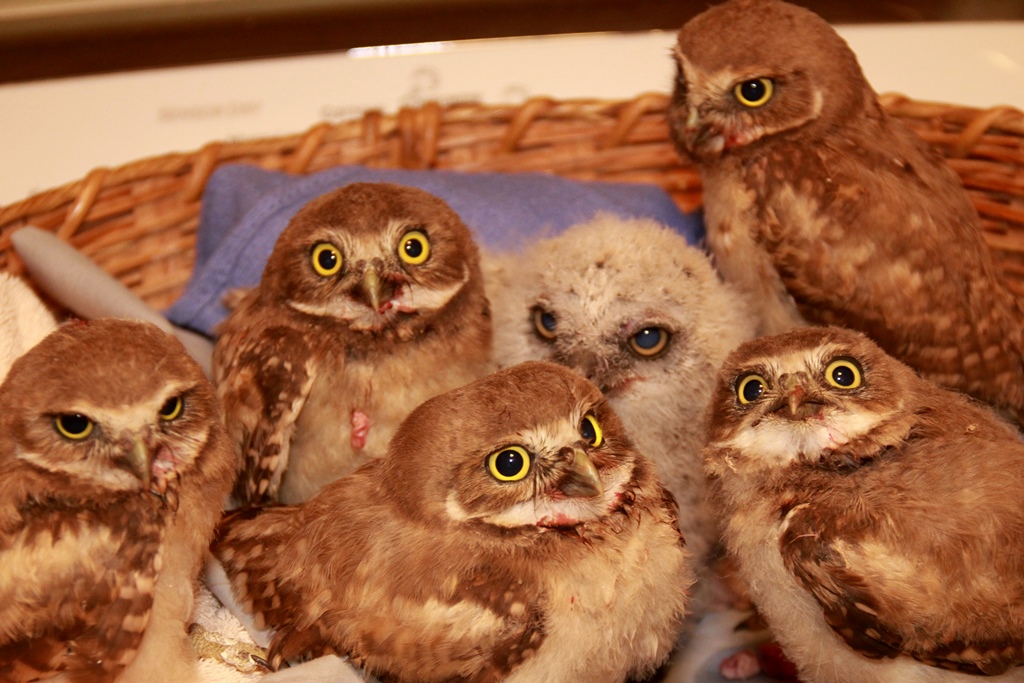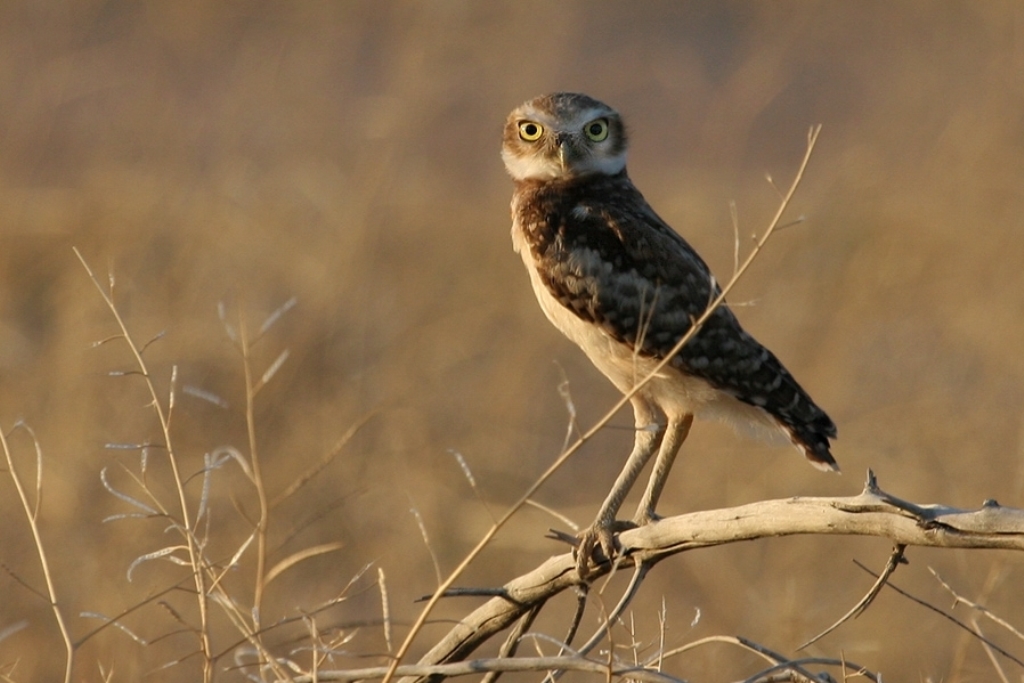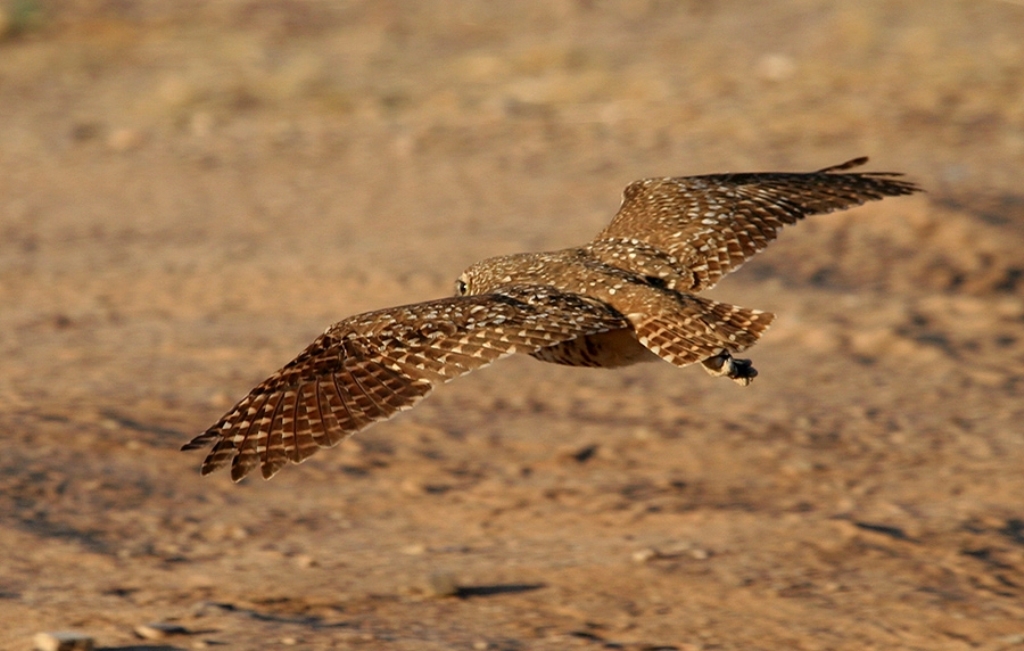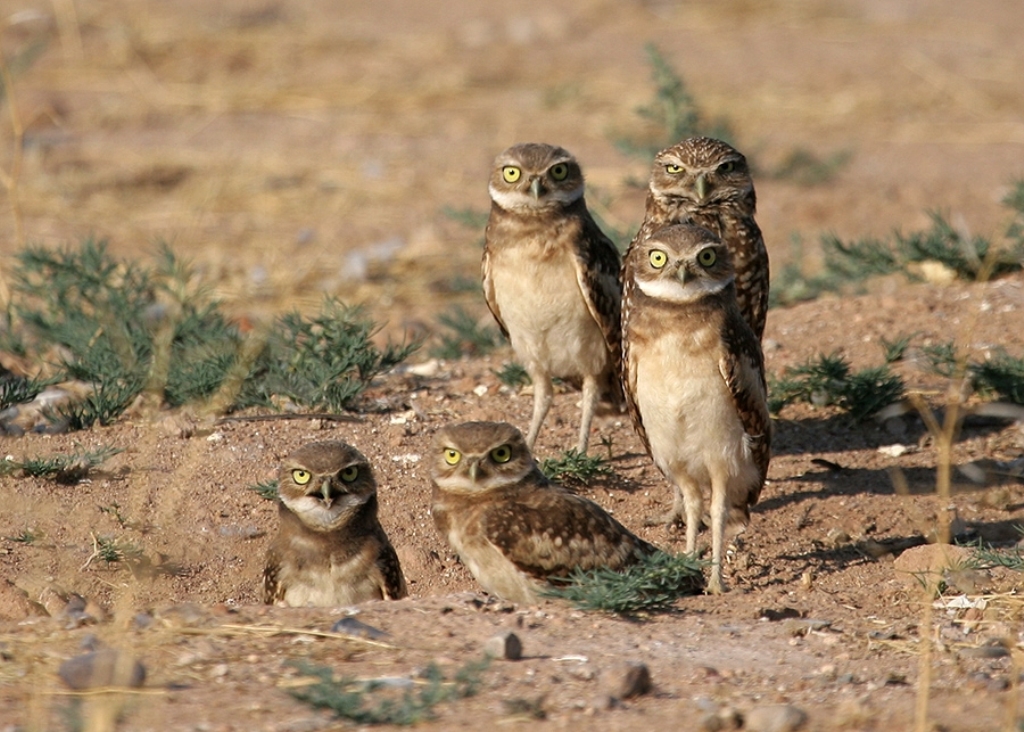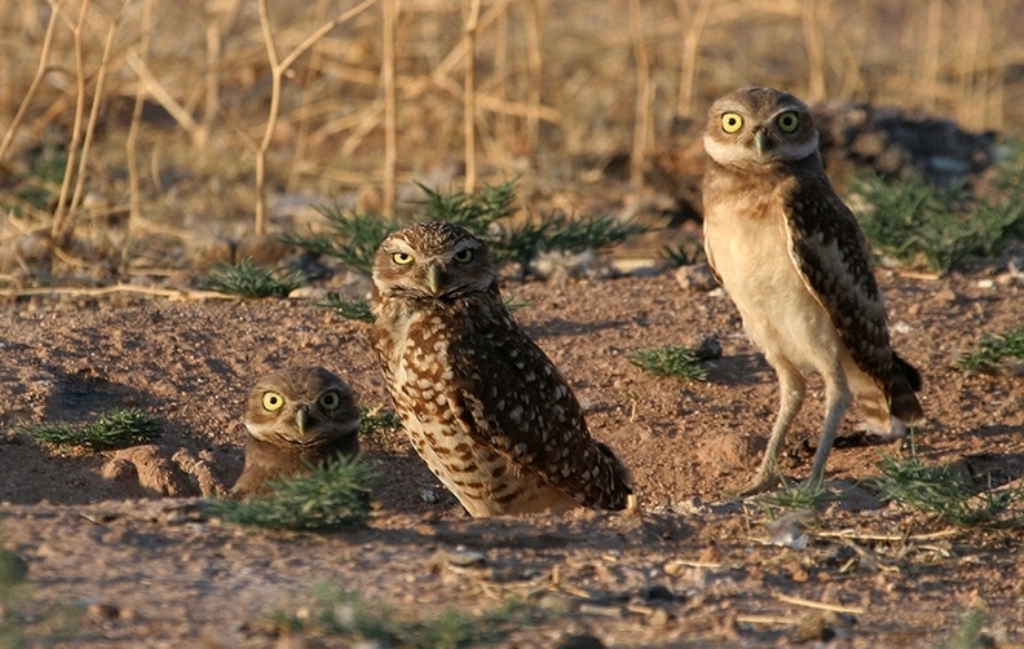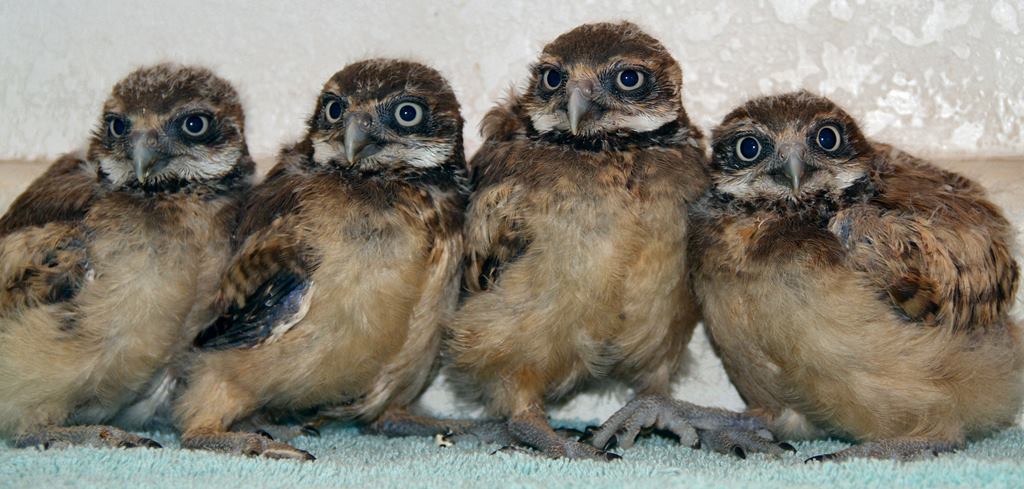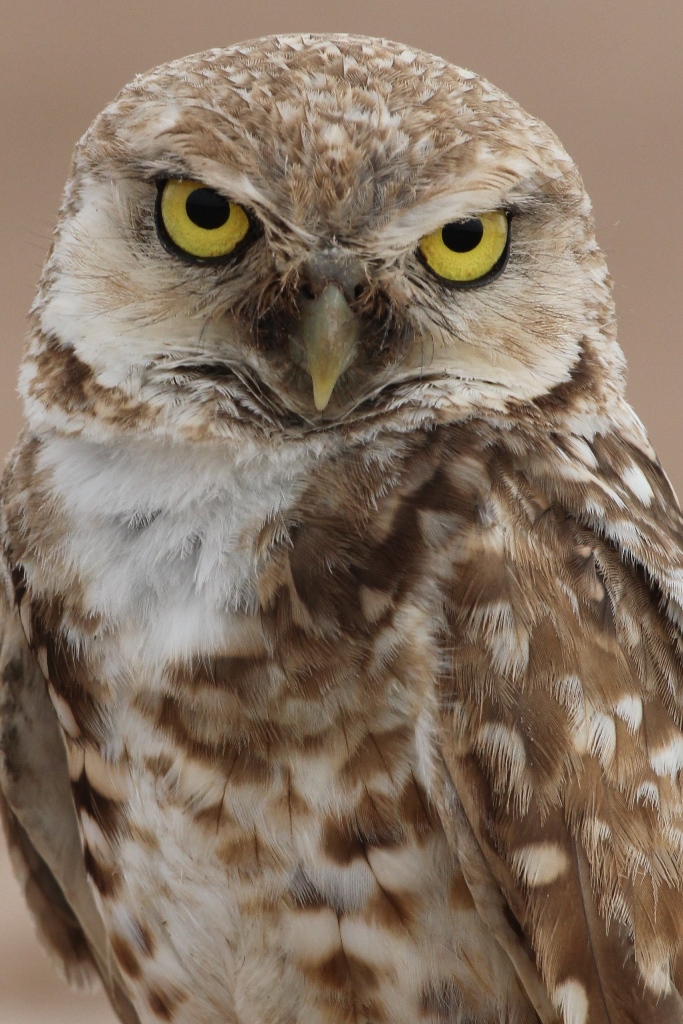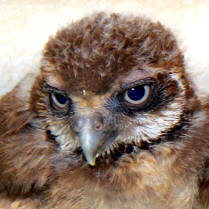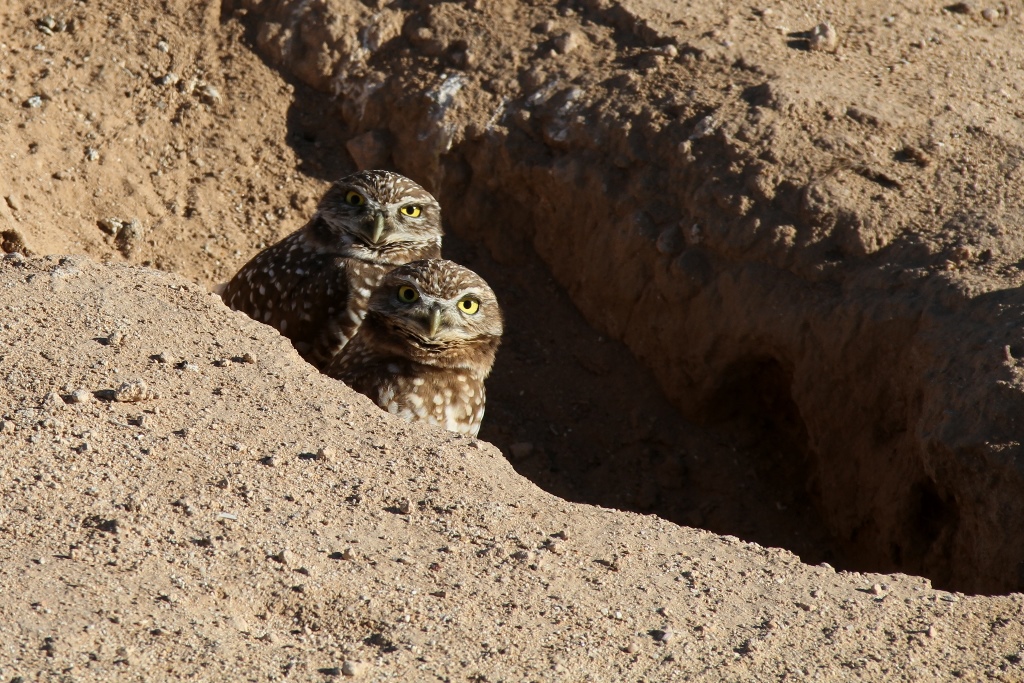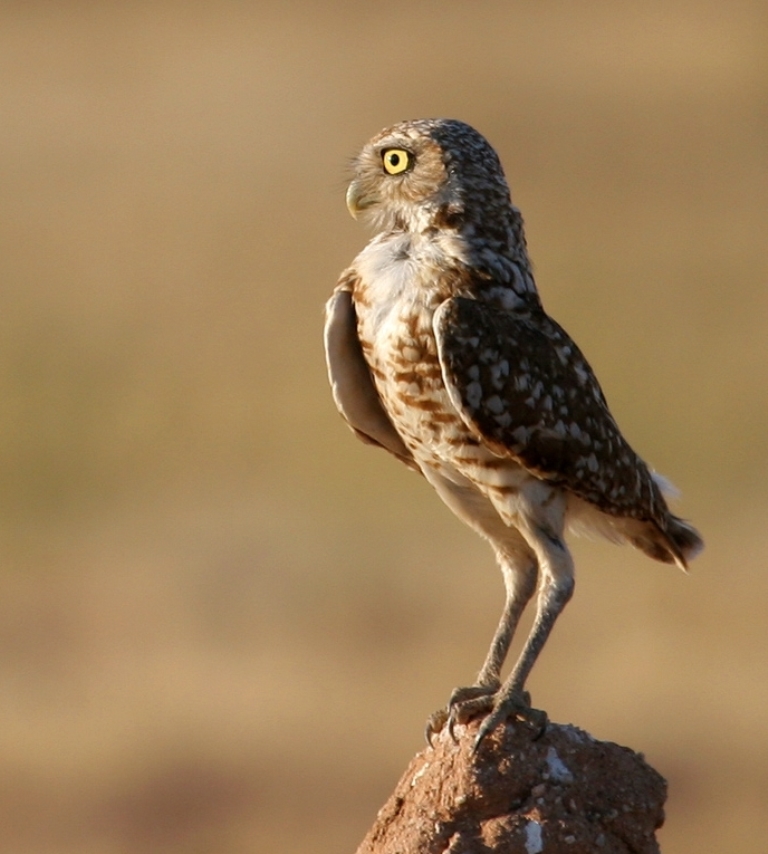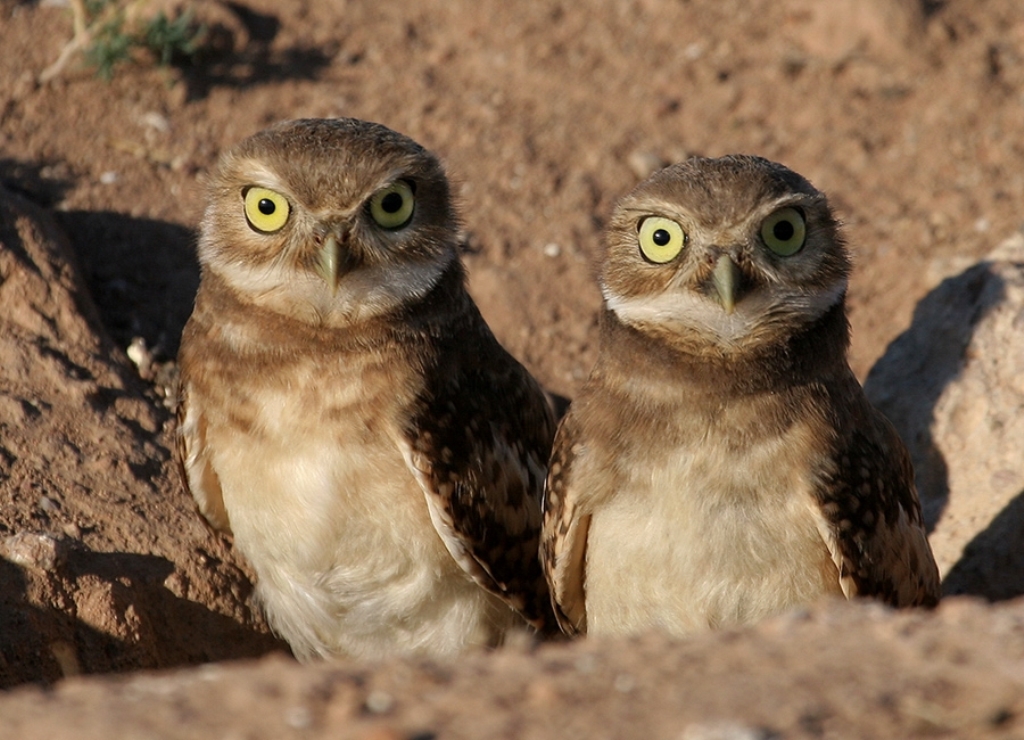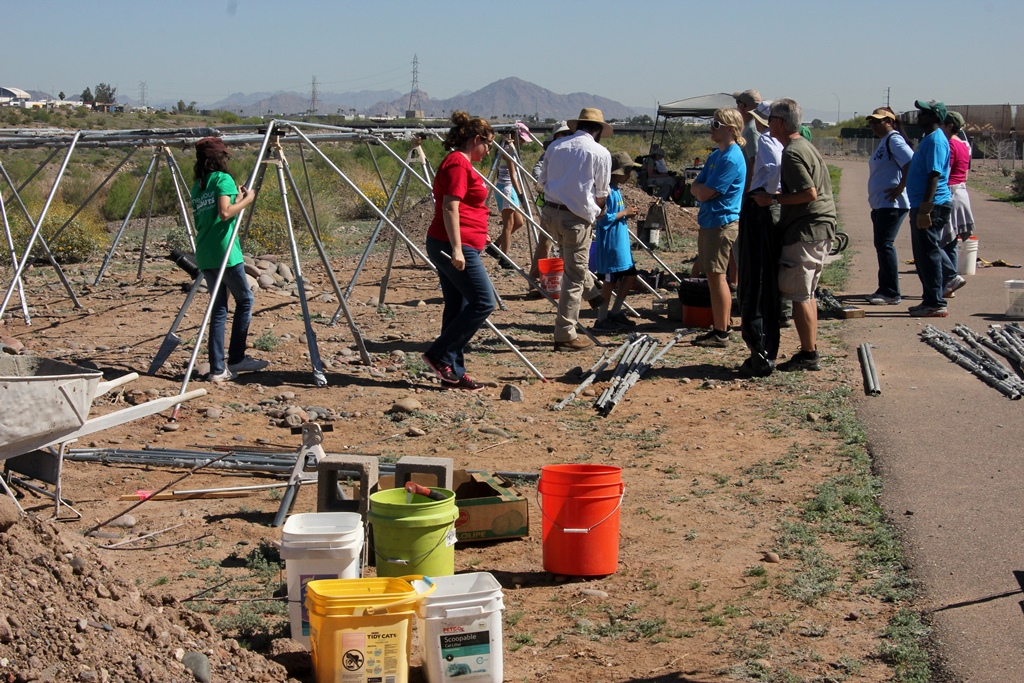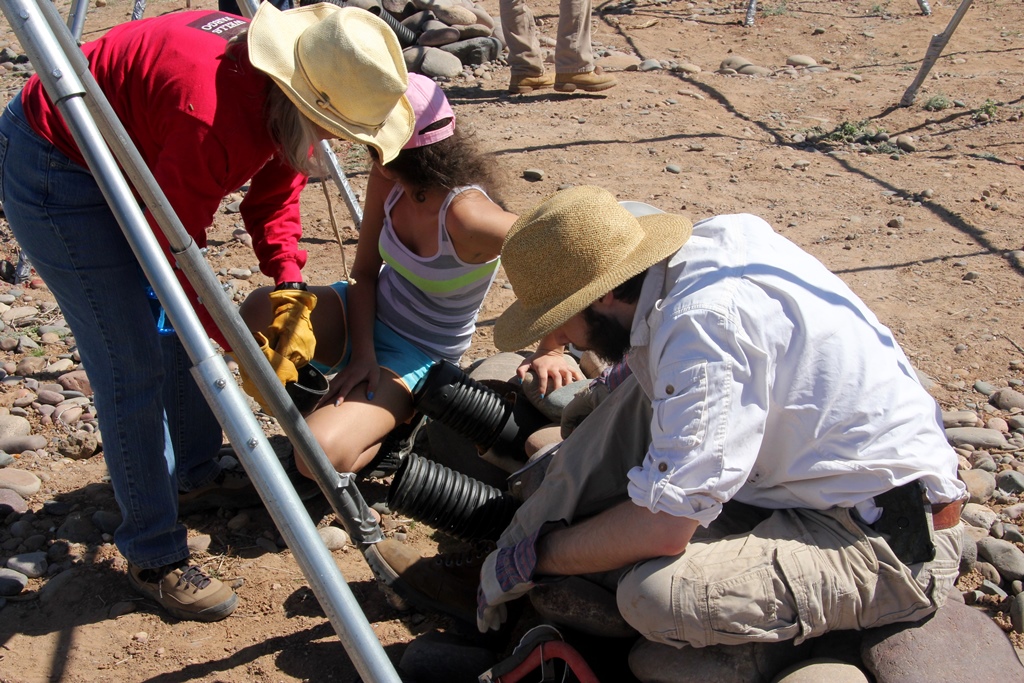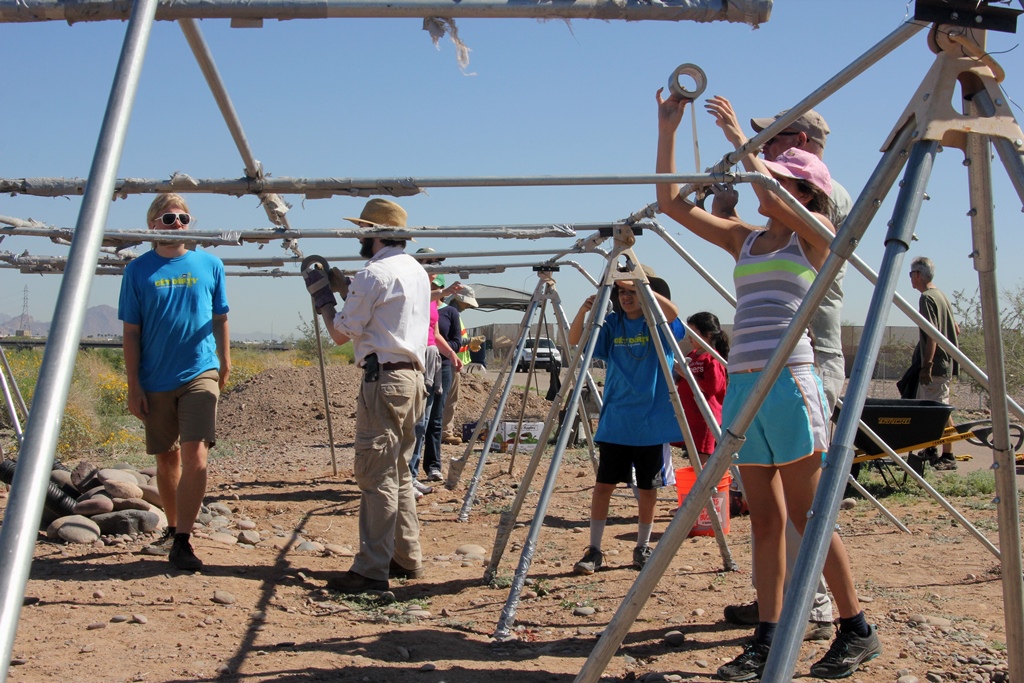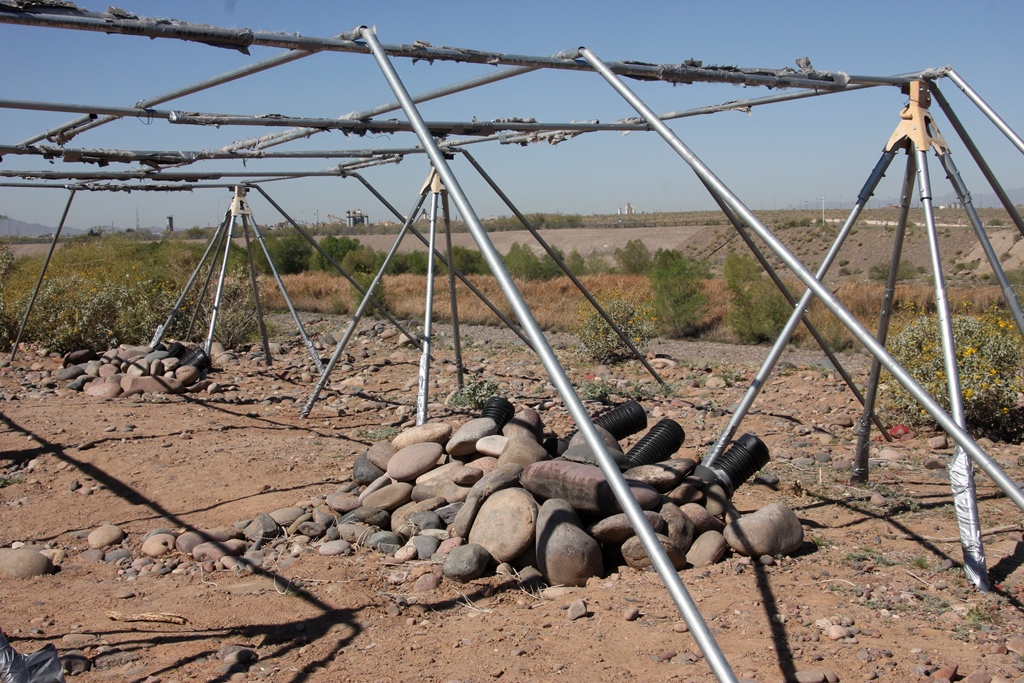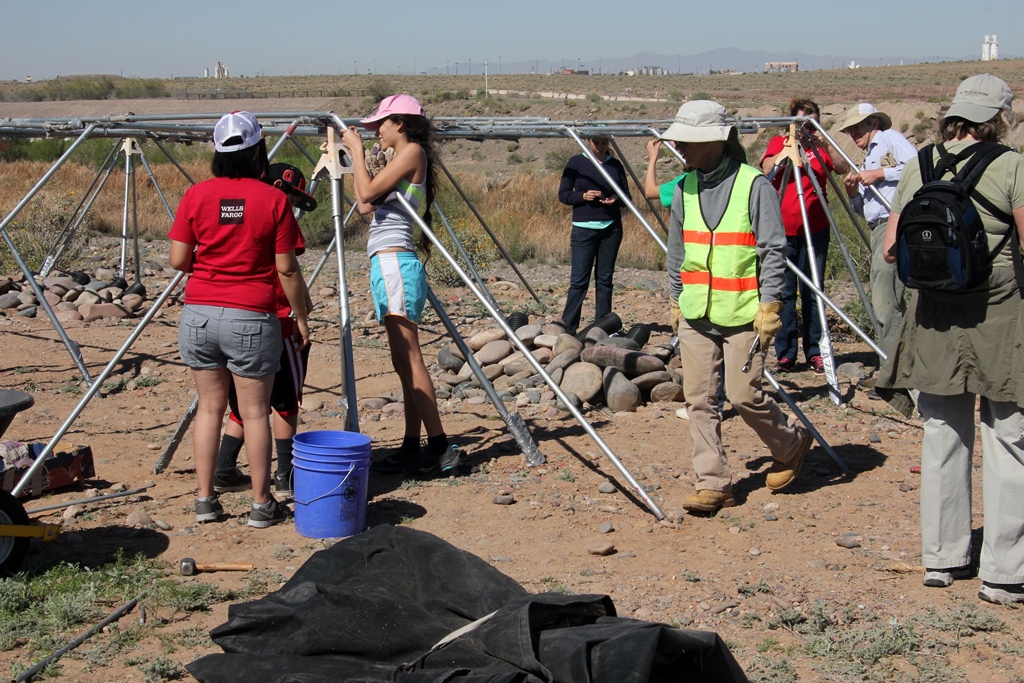Relocating Burrowing Owls
Across the State of Arizona
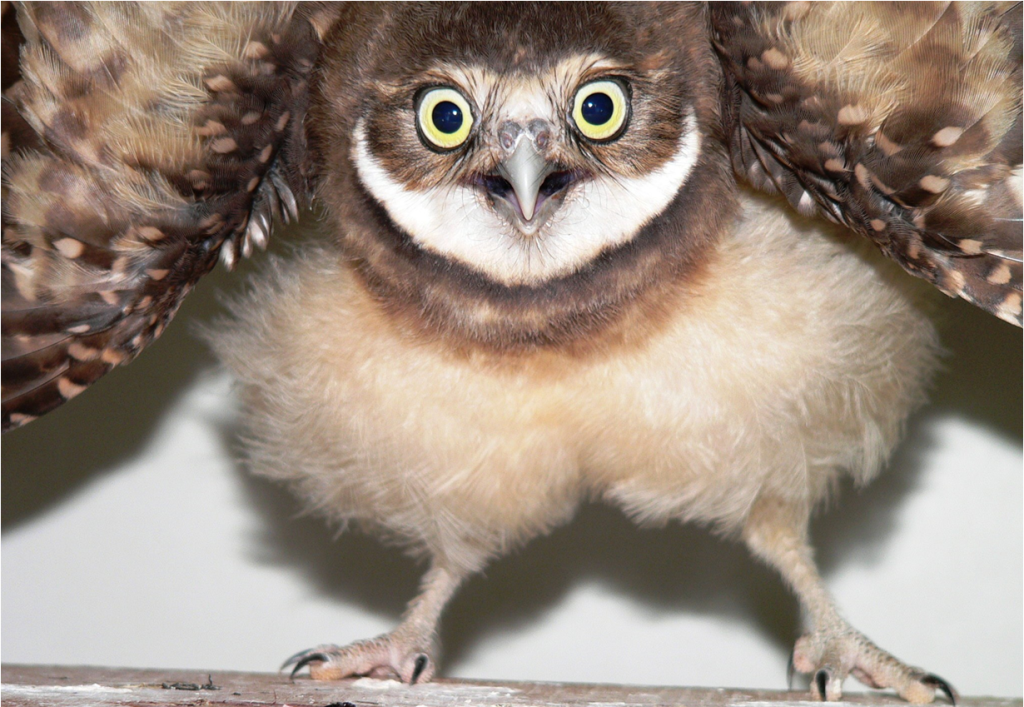
About The Project
Western Burrowing Owls have experienced declining populations for decades. Wild At Heart’s Burrowing Owl Recovery Project is a comprehensive, multi-faceted effort to address all areas of burrowing owl conservation in Arizona. These efforts include rescue, reengineering habitat identification, relocation, release, and continued monitoring to ensure survival.
About Burrowing Owls
Western Burrowing Owls (Athene cunicularia hypugaea) live in open, treeless areas with low, sparse vegetation, usually on gently sloping terrain. The owls can be found in grasslands, deserts, and steppe environments; on golf courses, pastures, agricultural fields, airport medians, and road embankments; in cemeteries and urban vacant lots. Active both day and night.
Habitat: Burrowing Owls are the only known owl to live and raise their young underground in burrows abandoned deserted squirrel, kangaroo rat, coyote, fox, skunk and badger. These adorable, little owls are unable to dig their own burrow.
Nesting: Breeding pairs stay near a dedicated nesting burrow, while wintering owls may move around and may roost in tufts of vegetation rather than in burrows.
Diet: Burrowing Owls eat invertebrates (insects) and small vertebrates (mammals). Burrowing Owls commonly hunt grasshoppers, crickets, moths, beetles, mice, voles, and shrews. They also prey on dragonflies, giant water bugs, earwigs, caterpillars, scorpions, earthworms, frogs, toads, snakes, lizards, turtles, salamanders, bats, ground squirrels, small weasels, young rabbits, songbirds, and waterbirds. Females catch more insects, mostly during the day; males take most of the vertebrates, mostly at night.
Threat
In Arizona, new construction has significantly diminished the colonies of burrowing animals where Burrowing Owls once nested by the hundreds. Pesticides, shooting, entanglement in loose fences, and similar manmade hazards are also major sources of mortality.
The Burrowing Owl is listed as Endangered in Canada, Threatened in Mexico, and a Species of Special Concern in Florida and much of the Western United States. As Arizona continues to grow, one of the greatest challenges is to minimize the impact of growth on displaced wildlife, and the use of artificial burrows is now helping to counter this threat.
Conservation
Burrowing Owls have benefited from protective legislation, reintroduction and habitat protection programs, and artificial nest burrows. Because Burrowing Owls do not require large stretches of habitat, these owls can benefit from the protection of relatively small patches of suitable land.
In 1993, Sam and Bob Fox, founders of Wild At Heart, identified this need and built the first artificial underground owl burrow in Arizona. Wild At Heart has received regional and national recognition for its Burrowing Owl New Habitat Projects.
In 2001, Greg Clark became Wild At Heart’s Burrowing Owl Habitat Coordinator. He expanded Wild At Heart’s rescue and relocation procedures and today this program continues to be recognized by conservation organizations, such as the 2011 John Muir Conservation Award and the 2014 Cox Conserves Hero Award.
About Burrowing Owls
Western Burrowing Owls (Athene cunicularia hypugaea) live in open, treeless areas with low, sparse vegetation, usually on gently sloping terrain. The owls can be found in grasslands, deserts, and steppe environments; on golf courses, pastures, agricultural fields, airport medians, and road embankments; in cemeteries and urban vacant lots. Active both day and night.
Habitat: Burrowing Owls are the only known owl to live and raise their young underground in burrows abandoned deserted squirrel, kangaroo rat, coyote, fox, skunk and badger. These adorable, little owls are unable to dig their own burrow.
Nesting: Breeding pairs stay near a dedicated nesting burrow, while wintering owls may move around and may roost in tufts of vegetation rather than in burrows.
Diet: Burrowing Owls eat invertebrates (insects) and small vertebrates (mammals). Burrowing Owls commonly hunt grasshoppers, crickets, moths, beetles, mice, voles, and shrews. They also prey on dragonflies, giant water bugs, earwigs, caterpillars, scorpions, earthworms, frogs, toads, snakes, lizards, turtles, salamanders, bats, ground squirrels, small weasels, young rabbits, songbirds, and waterbirds. Females catch more insects, mostly during the day; males take most of the vertebrates, mostly at night.
Threat
In Arizona, new construction has significantly diminished the colonies of burrowing animals where Burrowing Owls once nested by the hundreds. Pesticides, shooting, entanglement in loose fences, and similar manmade hazards are also major sources of mortality.
The Burrowing Owl is listed as Endangered in Canada, Threatened in Mexico, and a Species of Special Concern in Florida and much of the Western United States. As Arizona continues to grow, one of the greatest challenges is to minimize the impact of growth on displaced wildlife, and the use of artificial burrows is now helping to counter this threat.
Conservation
Burrowing Owls have benefited from protective legislation, reintroduction and habitat protection programs, and artificial nest burrows. Because Burrowing Owls do not require large stretches of habitat, these owls can benefit from the protection of relatively small patches of suitable land.
In 1993, Sam and Bob Fox, founders of Wild At Heart, identified this need and built the first artificial underground owl burrow in Arizona. Wild At Heart has received regional and national recognition for its Burrowing Owl New Habitat Projects.
In 2001, Greg Clark became Wild At Heart’s Burrowing Owl Habitat Coordinator. He expanded Wild At Heart’s rescue and relocation procedures and today this program continues to be recognized by conservation organizations, such as the 2011 John Muir Conservation Award and the 2014 Cox Conserves Hero Award.

2011 John Muir Conservation Award

2014 Cox Conserves Hero Award
Get Involved
Invitation to the Public for Help
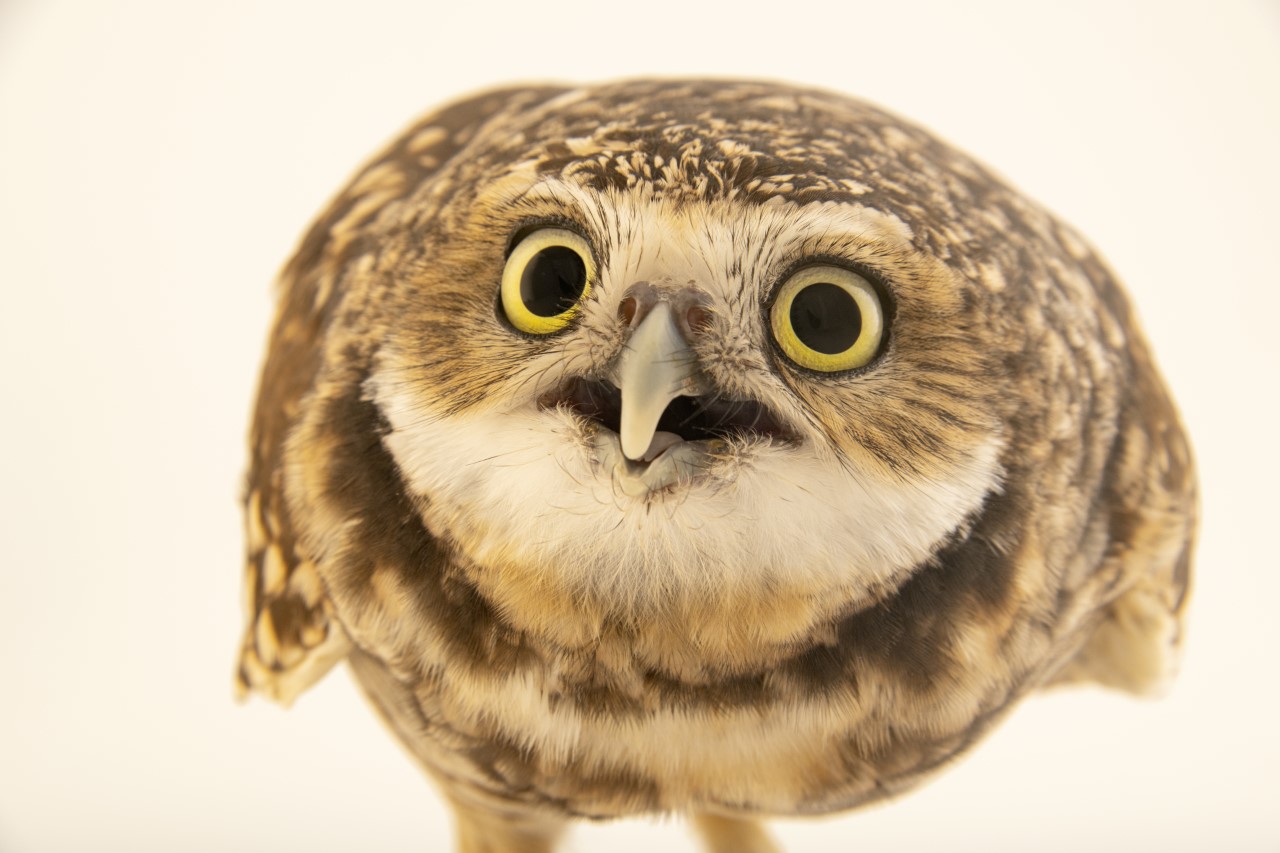
Wild At Heart’s Burrowing Owl Relocation events ARE open to the public. Thousands of children and adults throughout Arizona have already helped build over 6,000 artificial burrow habitats, providing homes for 2,500+ Burrowing Owls. The need continues to grow each year.
Captured owls are cared for by WAH volunteers for a minimum of 60 days: 30 days at the WAH facility, and another 30 days at the new relocation site. This transitional period is necessary to break the owls’ bond with their former habitat.
You can get involved during the spring (March – May), to directly help these wonderful little owls. Connect with us on Facebook to see updates and announcements of dates and locations or contact us by filling out this form.
Videos
Burrowing Owl Introduction: Cox Conserves Heroes
Burrowing Owl Introduction: Cox Conserves Heroes
Burrowing Owl Introduction: Cox Conserves Heroes
Helpful Resource: Burrowing Owl Artificial Nest Box Project
Volunteer


